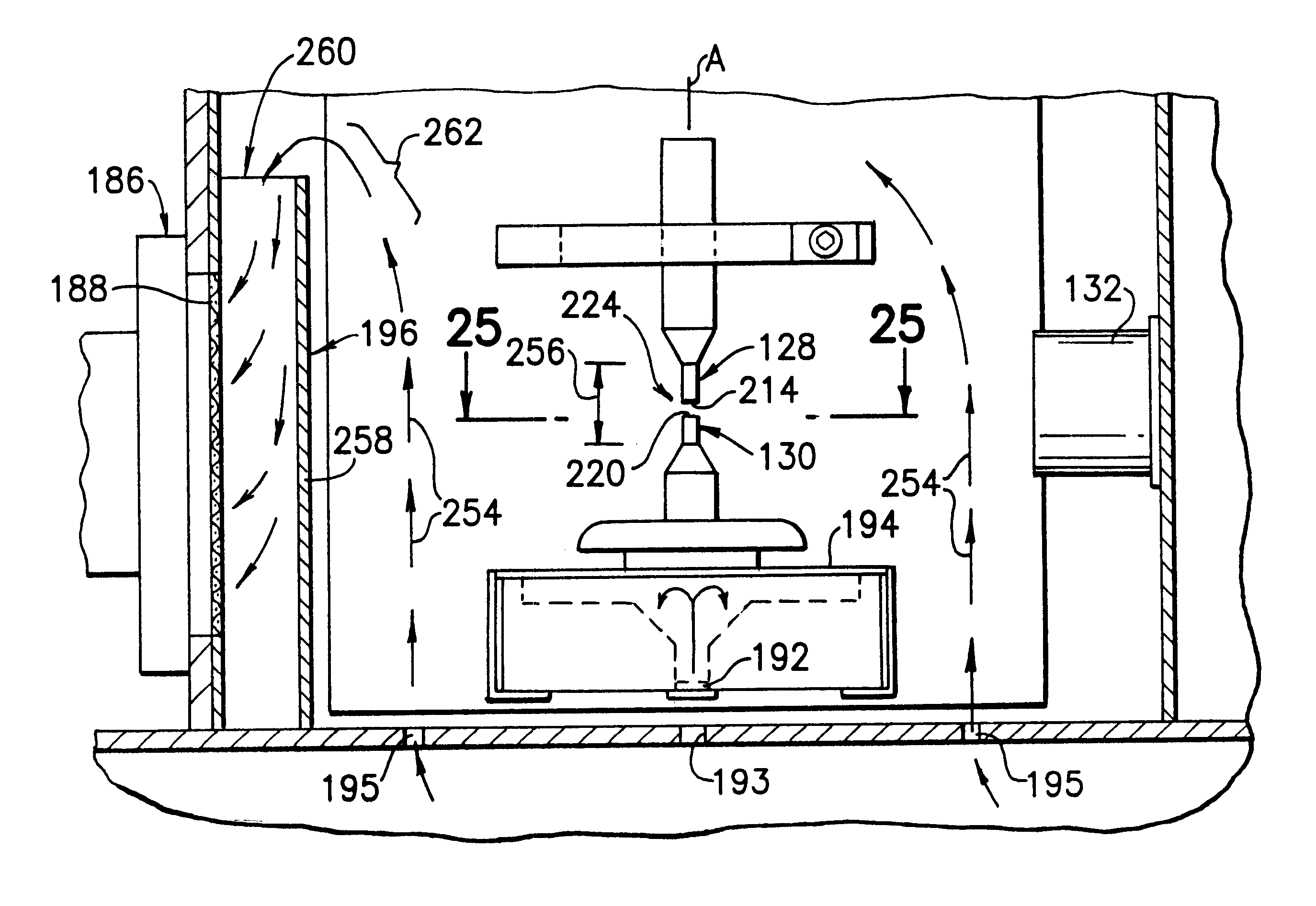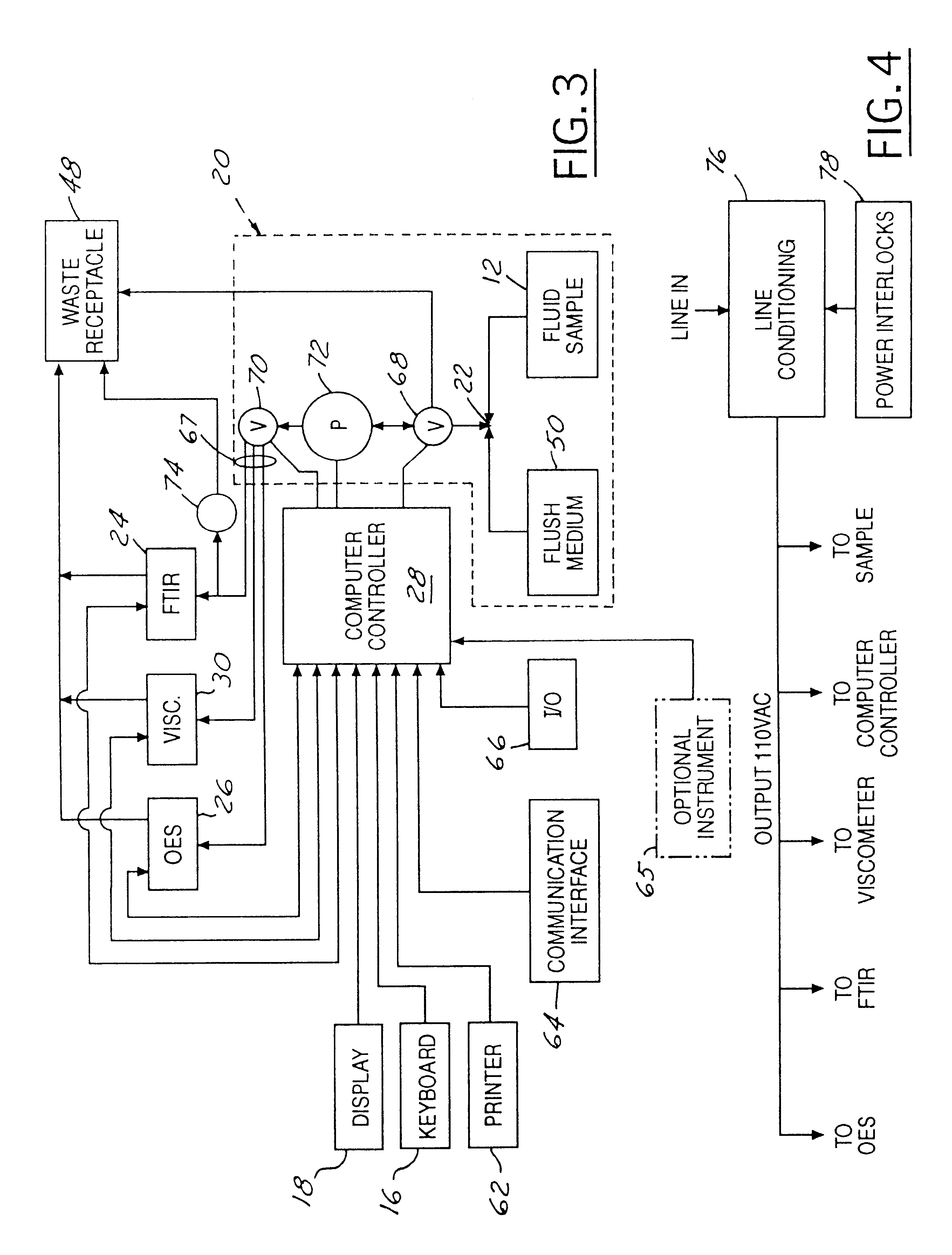On-site analyzer having spark emission spectrometer with even-wearing electrodes
a technology of spark emission spectrometer and analyzer, which is applied in the direction of spectrometry/spectrophotometry/monochromator, optical radiation measurement, instruments, etc., can solve the problems of further deterioration of internal parts, chemical problems, and further deterioration of non-metallic components,
- Summary
- Abstract
- Description
- Claims
- Application Information
AI Technical Summary
Benefits of technology
Problems solved by technology
Method used
Image
Examples
Embodiment Construction
Determining Concentration of a Wear Metal
This example pertains to the determination of the concentration of copper in a used engine oil sample. The first or preliminary step may involve identifying a background spectrum having a plurality of spectral features indicative at least in part of a composition of the electrodes. For example, FIG. 13A shows the spectrum of a reference base oil or mineral oil. Most of the emissions are a property of the electrodes. FIG. 13B shows the effect of additives which are often present in new oils. Emission lines 152, for example, correspond to the additive magnesium. Emission lines 152 may also be useful as emission lines having a known, absolute wavelength for purposes of correcting for wavelength drift as described above under the heading "X-AXIS CORRECTION". FIG. 14 illustrates a further example of a new oil having magnesium additive emission lines 154, copper additive emission lines 156, and calcium additive emission lines 158. FIGS. 15A-15C sho...
PUM
| Property | Measurement | Unit |
|---|---|---|
| Height | aaaaa | aaaaa |
| Depth | aaaaa | aaaaa |
| Depth | aaaaa | aaaaa |
Abstract
Description
Claims
Application Information
 Login to View More
Login to View More - R&D
- Intellectual Property
- Life Sciences
- Materials
- Tech Scout
- Unparalleled Data Quality
- Higher Quality Content
- 60% Fewer Hallucinations
Browse by: Latest US Patents, China's latest patents, Technical Efficacy Thesaurus, Application Domain, Technology Topic, Popular Technical Reports.
© 2025 PatSnap. All rights reserved.Legal|Privacy policy|Modern Slavery Act Transparency Statement|Sitemap|About US| Contact US: help@patsnap.com



